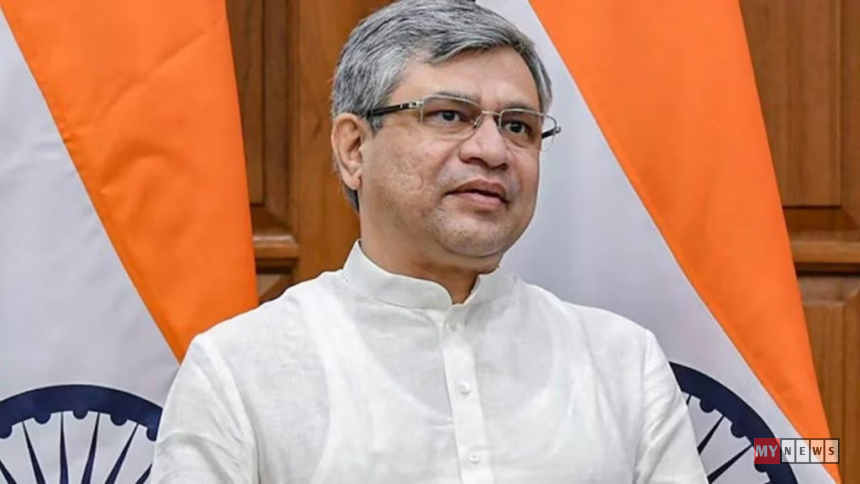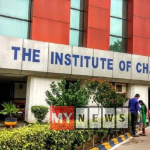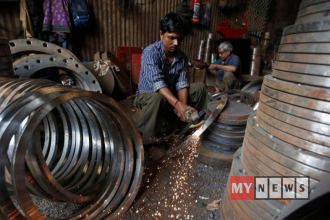A day after the government approved seven projects worth Rs 5,532 crore under the electronics component manufacturing scheme, Electronics and IT MinisterAshwini Vaishnawtells Rishi Raj that the next step will entail designing and manufacturing equipment and materials used in electronics production. Excerpts:
In domestic manufacturing, the beginning was made with smartphones, then to IT hardware, semiconductors, AI mission and now electronics components manufacturing. What’s next on the agenda?
In electronics manufacturing, we have followed a clear and steady strategy. We began with manufacturing finished products in India. This helped us build scale and skills. Next, we moved to modules and components. We are working on designing and manufacturing equipment used in electronics production. Next, we will go for manufacturing materials used in electronics production. Step by step, we are developing the entire ecosystem for electronics manufacturing in India. For the semiconductor ecosystem, global leaders in chemicals and specialty gases are planning to set up operations in India. We are also promoting these industries as part of our broader semiconductor strategy.
2026 will be the last year for smartphone PLI. Any thoughts on extending it further? Any such demands by the industry?Today, India is the second-largest mobile phone manufacturer in the world. In the last 11 years, our mobile phone production has grown 29 times, reaching nearly Rs 5.5 lakh crore. Exports have risen 131 times, crossing Rs 2 lakh crore. In the July-September quarter, we exported 4.9 million iPhones. This is a new record. The industry is in constant dialogue with us and we value their feedback. Further policy actions will be taken in consultation with stakeholders.
The US Administration has turned very protectionist and China also keeps putting hurdles in our path. How do you view these developments in our quest to emerge as a hub for global electronics manufacturing?
The world is witnessing a major realignment of supply chains. India has emerged as a stable and trusted partner amid global uncertainties. This trust and the capabilities of our engineers is helping us grow our electronics exports. Electronics exports have grown eight times in the last 11 years. We are rapidly becoming an integral part of the global value chain. We have become the largest smartphone exporter to the US, surpassing all other countries. We have a rich and abundant talent pool in India. We are home to 20% of the design workforce in semiconductors. We are continuously building the AI talent pool also. This is an asset to India as well as the world too.
You have often said that the time has come for India to become a product nation. The focus on products is happening both at the end of government and industry. But what about monetisation of such products? Do you think we can achieve global standards?
India is steadily transforming into a product nation and innovation-led economy. The focus is creating globally competitive products backed by Indian IPR (Intellectual Property Rights). Our homegrown startups are designing technologies that are in demand worldwide. For example, VerveSemi, a DLI-approved startup, is developing advanced semiconductor IPs for electric vehicles, aerospace and smart-energy systems. There are many such examples of Indian innovators creating products for global markets. This shift towards product-based innovation is driving monetisation opportunities and creating high-value jobs.
Zoho and its product suite are in the news these days. You have also shifted to its products. It’s definitely a good move, but what will it take for the company to achieve scale both domestically and globally?
Scaling a software product requires innovation, readiness for global markets, and network effect. Zoho has over 120 million users in 150 countries and offers more than 55 applications to 700,000 organisations. Having built this capability, it is now in a position to provide a suite of services to us. We followed a transparent bidding process through which Zoho was selected. And now we have shifted email and office work to the Zoho suite of products. Many more Indian apps and services will be supported as a part of PM’s Atmanirbhar Bharat vision.
It’s often seen that self-reliance and digital sovereignty give companies and their products a head-start but with time they start losing traction. How can homegrown models achieve sustenance?
Sustaining self-reliance depends on various factors including innovation, ability to scale, and the ecosystem present. The foundation of any organisation has to go beyond initial enthusiasm. It requires systems and processes that ensure homegrown technologies evolve in sync with global benchmarks. Our strategy follows this path. India Stack, IndiaAI Mission and India Semiconductor Mission provide budding innovators with resources such as DPIs, EDA tools for semiconductor designs, AIKosh for Indian data sets, etc. Strong R&D linkages between startups, academia, and industry are vital for translating research into better products. And finally, providing targeted incentives through schemes like the Design Linked Incentive (DLI) for semiconductors and the IndiaAI Mission ensures that innovation is sustained and IP creations are rewarded. When startups build on trusted digital infrastructure and export-ready standards, they naturally achieve resilience and long-term viability.
You have been a proponent of India becoming a part of the global value chain in electronics manufacturing. Where are we currently and what targets of domestic value addition have you set?
Because of these two initiatives, within the next five years we will aim to reach a level of value addition that other countries achieved in three decades.
What’s the progress of IndiaAI Mission and on producing homegrown foundational models?
Under the IndiaAI Mission, twelve startups have been selected to build homegrown foundational AI models. These include small, medium, and large parameter models designed for real-world Indian use cases. At the large scale, Sarvam AI is developing open-source language models with 120 billion parameters. IIT Bombay-led BharatGen is building a model scalable up to one trillion parameters. Sarvam AI also plans to reach that scale soon.
At the medium scale, Fractal Analytics, Tech Mahindra Maker’s Lab and Zenteiq are developing AI tools for fields like life sciences and robotics. At the domain level, startups are focusing on sectoral models. Intellihealth is building a healthcare AI system for diagnosis and prediction of systemic disorders, including epilepsy. We are backing this innovation with a common compute facility of more than 38,000 GPUs for startups and researchers.
Your ministry has just come out with proposals seeking public consultation for creating a legal framework to curb deepfakes, basically by AI labelling. Do you think it will be effective and foolproof?
Our society and trust are adversely affected by synthetic content. We have published rules to label synthetic content. Large sections of society have welcomed this move.













